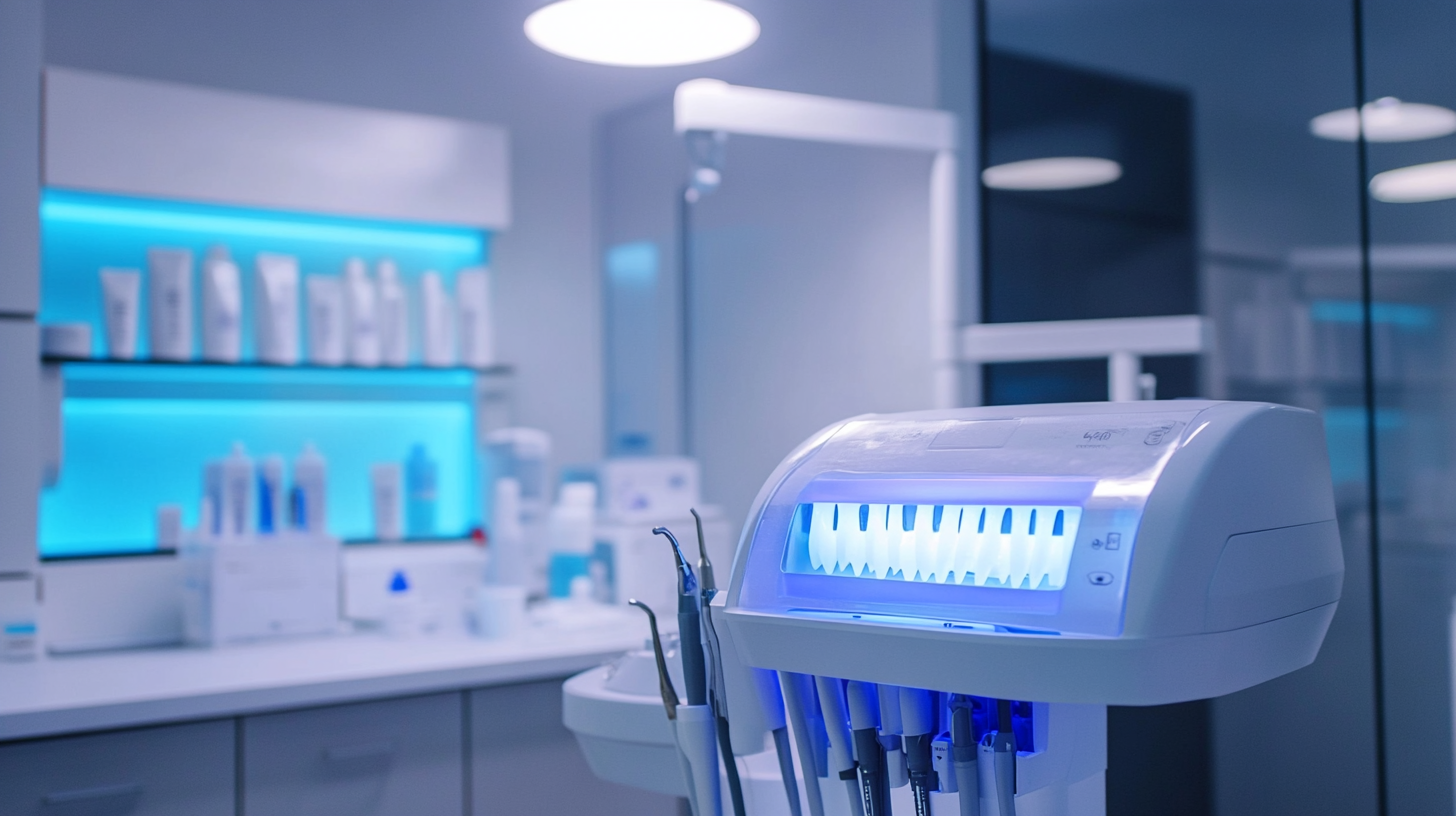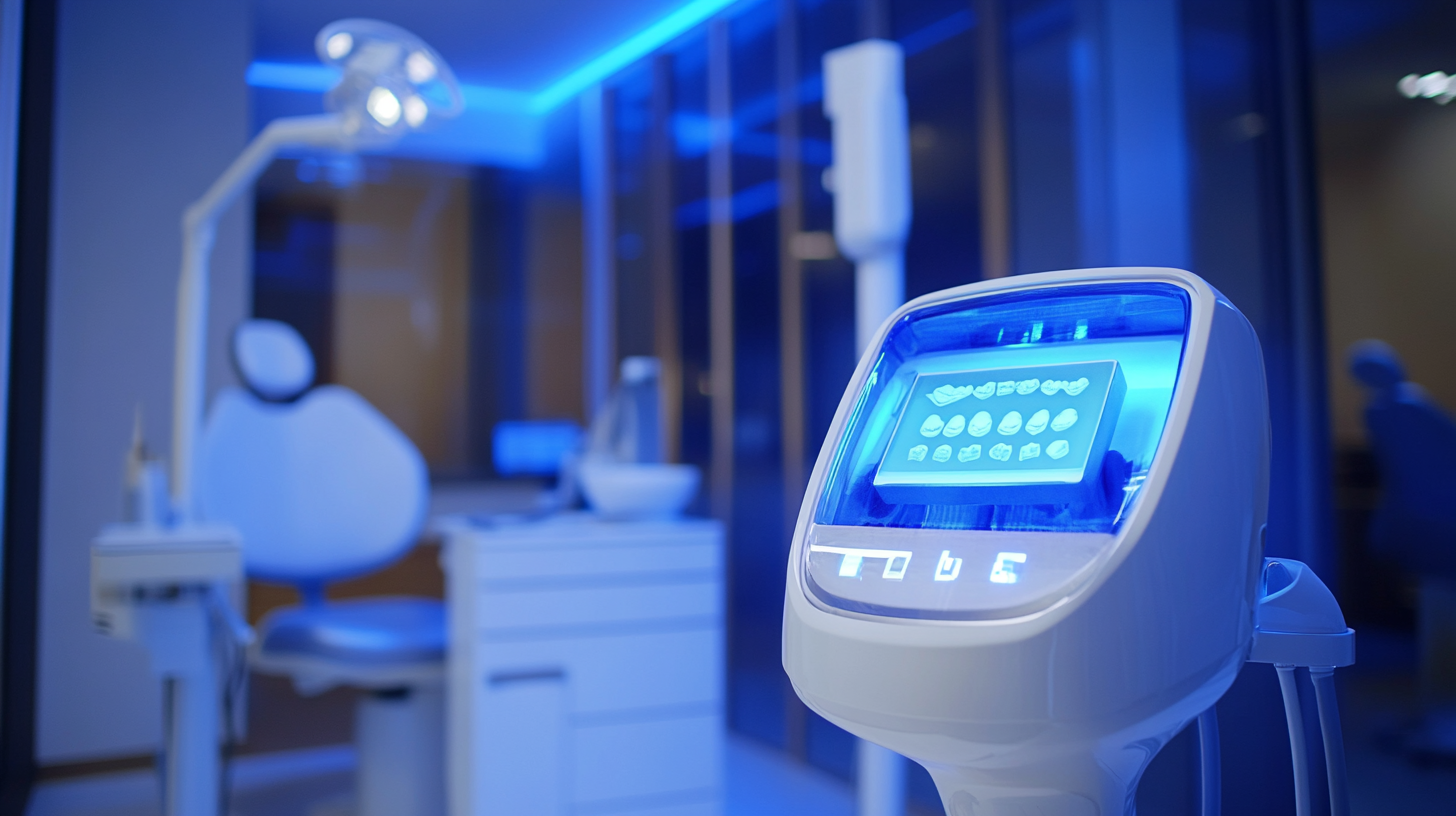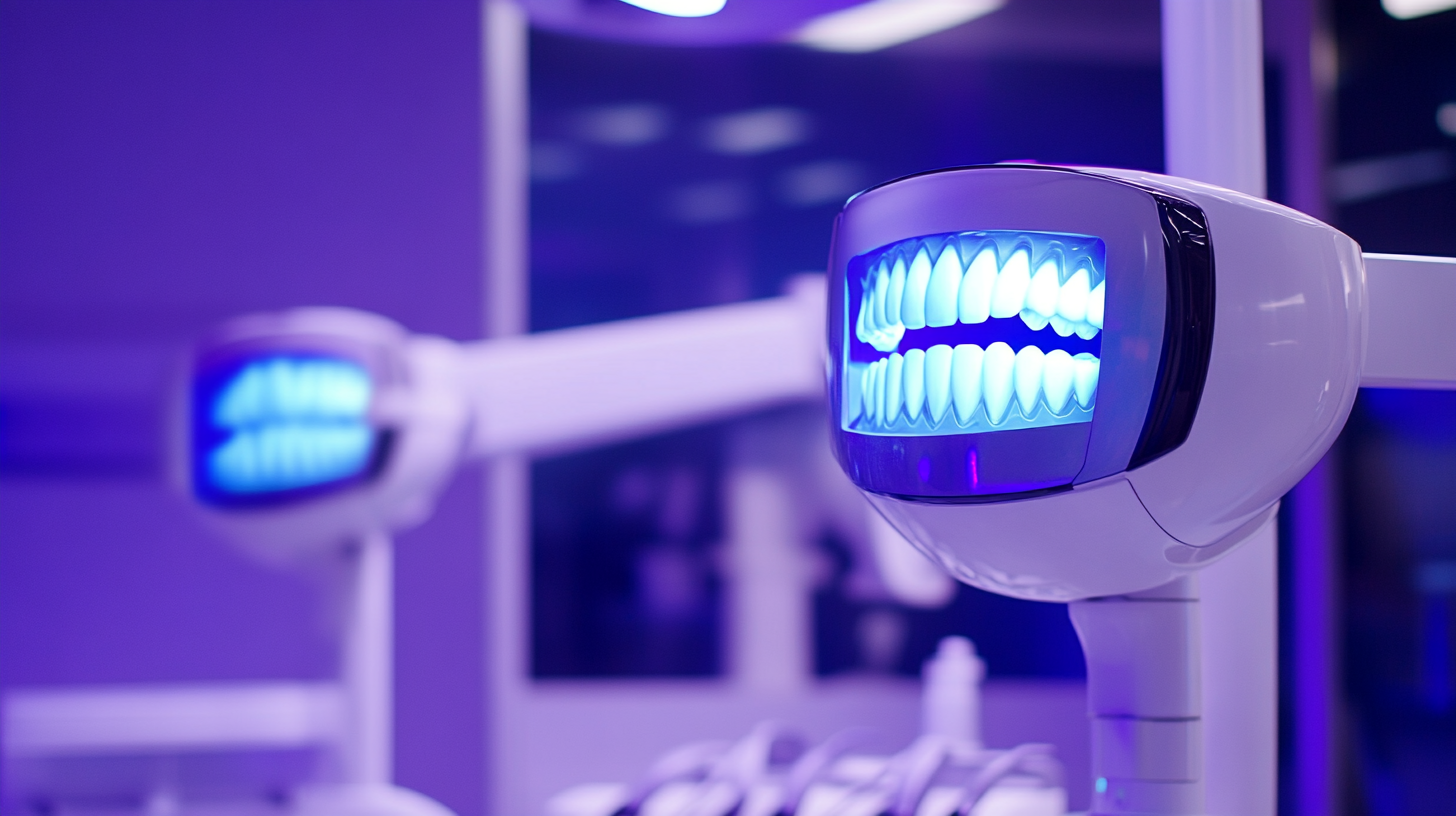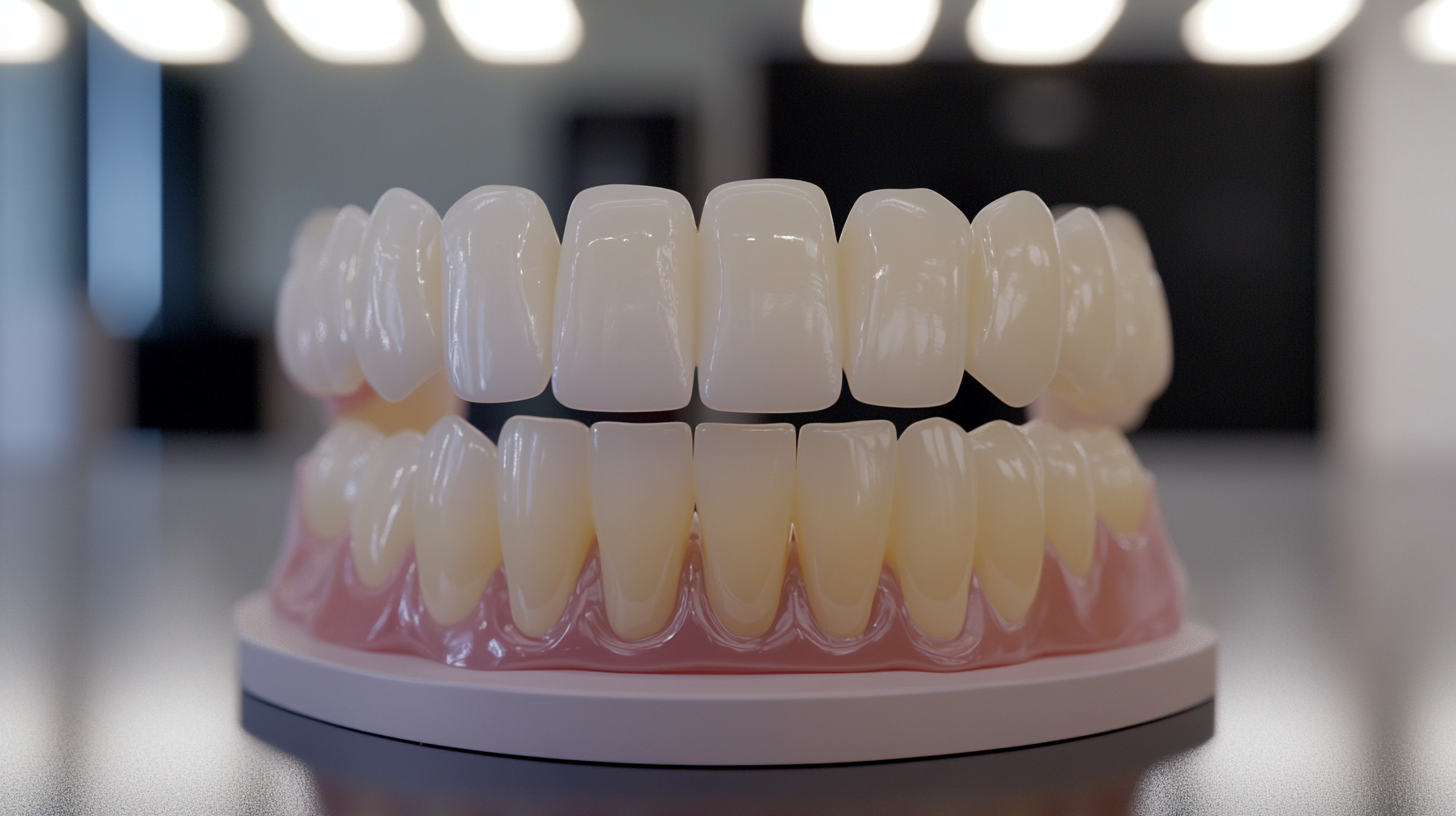The Evolution of Teeth Whitening Machines in a Global Market
The cosmetic dentistry industry has witnessed significant advancements over the years, particularly in the realm of teeth whitening. As consumers increasingly prioritize aesthetics, the demand for effective and efficient teeth whitening solutions has surged. According to a Market Research Future report, the global teeth whitening market is expected to reach USD 7.4 billion by 2024, growing at a compound annual growth rate (CAGR) of 4.7%. This growth can be largely attributed to the proliferation of innovative technologies, notably the teeth whitening machine, which offers professional results in a more convenient setting.
Teeth whitening machines have evolved from simple light-activated systems to sophisticated devices incorporating advanced LED technologies and customizable treatment options. This evolution has been fueled by both consumer preferences for at-home and in-office treatments and the dental industry's continual quest for improved efficacy and safety. A 2021 study published in the Journal of Dental Research indicated that patients prefer non-invasive procedures with predictable outcomes, highlighting the essential role of teeth whitening machines in meeting these expectations. As we delve into the evolution of these machines, we will explore the technological advancements, regulatory changes, and market dynamics that have shaped their trajectory in today's global landscape.

The Historical Development of Teeth Whitening Technology
The historical development of teeth whitening technology reflects a fascinating journey marked by innovations and changing consumer demands. Initially, teeth whitening practices can be traced back to the ancient Egyptians, who employed rudimentary methods using natural ingredients to enhance their smiles. However, modern advancements have significantly transformed this niche, leading to the emergence of sophisticated teeth whitening machines that cater to a global market. As of 2023, the oral healthcare industry has seen substantial growth, with the teeth whitening segment poised for remarkable expansion. According to recent reports, the global market size for teeth whitening is projected to rise from $8.93 billion in 2025 to $12.77 billion by 2032, reflecting a compound annual growth rate of 5.24% during the forecast period. This growth is indicative of a burgeoning interest in cosmetic dentistry and a heightened awareness of oral aesthetics among consumers. The evolution of teeth whitening technology has also been influenced by advancements in materials and techniques, leading to safer and more effective treatments. From the early days of rudimentary whitening agents to today's high-tech devices used in dental offices and at home, the journey showcases a blend of science and consumer preference. As the market continues to expand, innovations in teeth whitening machines will likely play a crucial role in shaping future trends, ensuring that brighter smiles remain a priority for many.

Key Innovations in Teeth Whitening Machines Over the Years
The evolution of teeth whitening machines has been marked by significant technological innovations that cater to an increasingly health-conscious and aesthetic-driven global market. Over the years, advancements in light technology and application methods have transformed teeth whitening from a luxury treatment to an accessible service across various demographics. According to a report by Grand View Research, the global teeth whitening market size was valued at approximately $6.25 billion in 2021 and is expected to grow steadily, highlighting the rising consumer demand for brighter smiles.
One of the key innovations in teeth whitening machines is the introduction of LED technology. Initially, whitening treatments relied on traditional chemical methods, which often resulted in sensitivity and discomfort. However, the shift to LED light systems has not only improved the efficacy of whitening treatments but also reduced treatment times significantly. For example, studies indicate that LED whitening can provide results in as little as 20 minutes when compared to over an hour for older methods. This feature has made the treatment more appealing to consumers seeking quick and effective solutions.
Additionally, the integration of mobile technology into teeth whitening machines has been a game changer. Portable whitening devices that can be used at home have surged in popularity, reflecting a growing trend towards convenience in personal care. A survey conducted by the American Dental Association revealed that about 40% of adults are interested in at-home whitening solutions. As a result, manufacturers have begun to focus on creating user-friendly devices that not only enhance accessibility but also ensure safety and effectiveness, further pushing the boundaries of innovation in this sector.

Global Market Trends Influencing Teeth Whitening Practices
The cosmetic dentistry landscape has seen a significant transformation in recent years, particularly in the teeth whitening segment. With a market size valued at approximately USD 8.14 billion in 2023, the global teeth whitening industry is poised for expansion, expected to grow to USD 8.52 billion in the coming years. This growth is largely influenced by evolving consumer preferences for aesthetic enhancement, underpinned by social media and beauty trends that place a strong emphasis on a bright, white smile.
Several global market trends are shaping teeth whitening practices across various regions. An increasing number of consumers are seeking professional dental services and at-home whitening products that yield effective results. As a result, advancements in dental technologies, such as laser treatments and innovative whitening formulations, are gaining traction. These developments not only enhance the efficacy of teeth whitening procedures but also cater to a growing clientele eager for quick and lasting results.
Additionally, the rise of online retail platforms has provided consumers with easier access to a wide array of teeth whitening products, further driving demand. With dental care becoming an integral part of personal grooming and wellness, the teeth whitening market is expected to continue flourishing amid these dynamic trends, reflecting the shifting priorities and desires of consumers worldwide. As the industry evolves, staying abreast of these trends will be crucial for both professionals and consumers seeking the best teeth whitening options available.

Comparative Analysis of At-Home vs. Professional Whitening Solutions
The popularity of at-home teeth whitening solutions has surged in recent years, driven by consumer demand for convenient and cost-effective options. Products like whitening strips, gels, and trays have flooded the online marketplace, offering a fast route to a brighter smile. Recent evaluations by oral care experts emphasize that many of these kits deliver impressive results while prioritizing safety. The key is to select products backed by professional recommendations to ensure that efficacy does not compromise dental health.
In contrast, professional whitening treatments provided by dentists offer a different level of assurance. These services typically utilize more potent bleaching agents and are customized to the individual's dental profile, potentially yielding faster and more dramatic results. However, the cost and time commitment associated with in-office treatments can be a barrier for some. Interestingly, an in vitro study on over-the-counter whitening products indicated varying effects on enamel, showing that while some products effectively lighten teeth, they can also impact the microhardness and surface topography of enamel. This highlights the importance of being informed when choosing between at-home and professional options, ensuring that consumers are aware of both the benefits and risks associated with their whitening choices.
Future Directions for Teeth Whitening Machines in a Changing Market
The teeth whitening industry has experienced significant growth and transformation, driven by consumer demand for brighter smiles and advancements in technology. As we look towards the future of teeth whitening machines, several key trends are shaping the market. According to a recent report by Grand View Research, the global teeth whitening market is expected to reach USD 7.4 billion by 2025, fueled by innovations such as LED whitening technology and portable devices that cater to consumer convenience.
One prominent direction for the evolution of teeth whitening machines is the integration of smart technology. With the rise of IoT devices, manufacturers are exploring how to incorporate app connectivity into their products, enabling users to monitor their whitening progress and receive personalized recommendations. The data-centric approach allows for tailored treatments that address individual needs, making the process more effective. Additionally, a survey by Research and Markets indicates that 34% of consumers are willing to invest more in advanced whitening treatments that offer perceived value and enhanced results.
Moreover, sustainability is becoming a focal point in the teeth whitening sector. As consumers grow increasingly environmentally conscious, brands are responding by developing eco-friendly products and packaging. The emphasis on sustainable practices not only appeals to a broader audience but also positions companies as responsible players in the market. Reports show that 28% of consumers prioritize brands that demonstrate environmental accountability, illustrating the importance of aligning business practices with consumer values as the industry moves forward.

